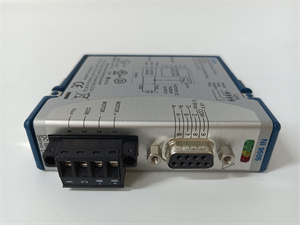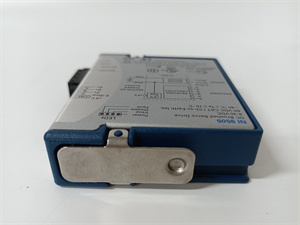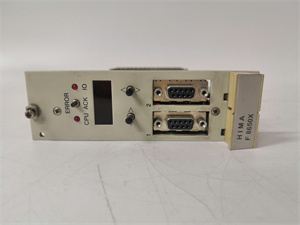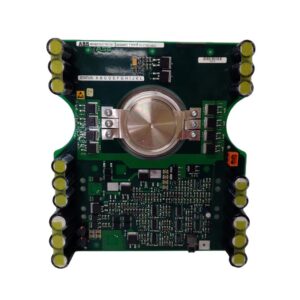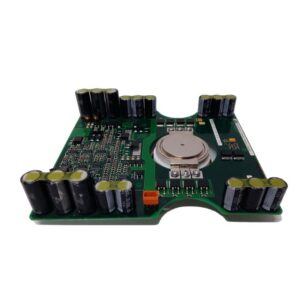Description
Product Overview
The NI NI-9505 is a high-performance CAN (Controller Area Network) interface module developed by National Instruments (NI), a leading provider in the field of measurement and automation solutions. As an integral part of NI’s modular I/O product lineup, the NI-9505 is meticulously designed to enable seamless communication within CAN – based networks. It serves as a reliable bridge between various CAN – enabled devices, facilitating efficient data exchange, control, and monitoring in a wide range of applications. Whether in industrial automation systems where multiple machines need to communicate and coordinate, or in automotive diagnostic and control systems, the NI NI-9505 ensures stable and accurate data transmission, enhancing the overall functionality and performance of the connected systems.
The NI NI-9505 is compatible with NI’s CompactDAQ and CompactRIO platforms, offering users a flexible and scalable solution for integrating CAN communication into their projects. With its advanced features and robust design, it caters to the demanding requirements of modern industrial and automotive applications, providing a cost-effective and efficient way to manage CAN – based communication tasks.
Technical Specifications
| Parameter Name | Parameter Value |
| Product Model | NI-9505 |
| Manufacturer | National Instruments (NI) |
| Product Type | CAN Interface Module |
| CAN Channels | 2 |
| CAN Protocol Version | CAN 2.0A and CAN 2.0B |
| Data Rate | Up to 1 Mbps |
| Message Buffer | 128 transmit and 128 receive |
| Operating Temperature | – 40 °C to 70 °C |
| Isolation | 2500 V rms galvanic isolation |
| Power Consumption | 1.5 W typical |
| Physical Dimensions | 100.33 mm x 161.57 mm |
| Compatibility | NI CompactDAQ, NI CompactRIO |
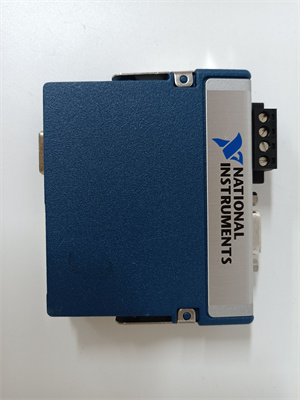
NI NI-9505
Main Features and Advantages
Dual – Channel CAN Communication
The NI NI-9505 stands out with its dual – channel CAN interface, allowing for simultaneous communication on two independent CAN networks. This feature is extremely useful in complex systems where multiple CAN – based subsystems need to be monitored and controlled separately. For example, in a large – scale industrial plant, one channel can be dedicated to the communication of production line machinery, while the other can handle the monitoring of safety – critical systems. The dual – channel design increases the module’s versatility and enables more efficient management of CAN – based communication tasks.
High – Speed Data Transfer
With a data rate of up to 1 Mbps, the NI-9505 ensures fast and efficient data transfer within CAN networks. In applications where real – time data is crucial, such as in automotive engine control systems or high – speed manufacturing processes, this high – speed capability allows for quick response times and seamless coordination between devices. It enables the transmission of large amounts of data in a short period, ensuring that the connected systems can operate at optimal performance levels.
Robust Isolation and Error Handling
The module features 2500 V rms galvanic isolation, providing excellent protection against electrical noise, ground loops, and voltage spikes. This isolation not only enhances the reliability of the communication but also safeguards the connected devices from potential electrical damage. Additionally, the NI NI-9505 is equipped with comprehensive error – handling mechanisms. It can detect and report various CAN – specific errors, such as bit errors, stuff errors, and CRC errors, ensuring data integrity and enabling quick troubleshooting in case of communication issues.
Large Message Buffer
The NI-9505 comes with a generous message buffer of 128 transmit and 128 receive buffers. This large buffer capacity allows the module to handle a high volume of messages without data loss, even during peak communication periods. It ensures smooth data flow and reduces the likelihood of buffer overflows, which can cause communication failures. This is especially beneficial in applications with a high message traffic density, such as in complex automotive networks or large – scale industrial automation systems.
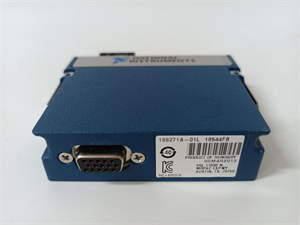
NI NI-9505
Application Field
The NI NI-9505 finds extensive applications across multiple industries. In the automotive industry, it is widely used for in – vehicle networking, diagnostic systems, and powertrain control. It enables communication between different electronic control units (ECUs), such as the engine control module, transmission control module, and anti – lock braking system. This allows for coordinated operation of vehicle systems, improved performance, and easier diagnostic and maintenance.
In industrial automation, the NI-9505 plays a crucial role in connecting and controlling CAN – based devices on the factory floor. It can be used to integrate programmable logic controllers (PLCs), robotic arms, sensors, and actuators into a unified network, enabling seamless data exchange and precise control of manufacturing processes. This results in increased productivity, enhanced quality control, and reduced downtime.
The module is also valuable in the aerospace and defense sectors, where it can be used for communication between different avionics systems and subsystems. It ensures reliable data transfer in harsh environments, facilitating the operation and monitoring of critical systems in aircraft and spacecraft. Additionally, in research and development, the NI NI-9505 can be used to develop and test CAN – based communication protocols and systems, providing researchers with a powerful tool for innovation.
Related Products
- NI NI-9515: This is an enhanced version of the NI-9505with four CAN channels instead of two. It offers increased capacity for handling multiple CAN networks simultaneously, making it suitable for more complex applications that require a higher level of network integration and communication management.
- NI NI-9853: While the NI-9853is a high – speed serial bus interface module supporting protocols like Serial RapidIO and SpaceWire, it serves a different purpose compared to the NI-9505. However, in some large – scale systems, both modules can be used together to handle different types of communication requirements, with the NI-9505 managing CAN – based communication and the NI-9853 handling high – speed serial data transfer.
- NI NI-9401: A digital I/O module, the NI-9401provides digital signal input and output capabilities. It can be used in conjunction with the NI-9505 in systems where digital control signals need to be integrated with CAN – based communication, for example, in a control system where the NI-9505 communicates with sensors and actuators over CAN, and the NI-9401 controls external digital devices based on the received CAN data.
- NI NI-9234: A dynamic signal acquisition module, the NI-9234is used for measuring analog signals such as vibration and acoustic signals. In applications where CAN – based sensors are used to collect analog data, the NI-9505 can be used to transmit this data to a central processing unit, while the NI-9234 can be used for further analysis of the acquired analog signals.
- NI NI-9874: A high – speed Ethernet interface module, the NI-9874enables Ethernet – based communication. In modern industrial and automotive systems that require a combination of CAN and Ethernet communication, the NI-9505 and NI-9874 can work together to provide a comprehensive communication solution, with the NI-9505 handling CAN – based devices and the NI-9874 handling Ethernet – connected devices.
Installation and Maintenance
Pre – installation preparation
Before installing the NI NI-9505, ensure that your NI CompactDAQ or CompactRIO chassis is powered off. Check the compatibility of the chassis with the NI-9505 module and make sure there is an available slot for installation. Gently insert the NI-9505 module into the appropriate slot, ensuring it is firmly seated and properly aligned. After installation, power on the chassis and use the NI – MAX (Measurement & Automation Explorer) software to configure the module settings. Set the CAN protocol version, data rate, and other relevant parameters according to the requirements of your CAN – based network.
Maintenance recommendations
Regularly inspect the connections between the NI NI-9505 and other CAN – enabled devices to ensure they are secure and free from damage. Avoid excessive bending or pulling of the cables, as this can damage the connectors and disrupt communication. Periodically update the firmware of the NI-9505 module using the NI – MAX software to benefit from the latest performance improvements, bug fixes, and new features. If the module experiences any communication issues, such as data loss or error messages, use the built – in error – reporting capabilities of the module and refer to the NI product documentation for troubleshooting steps. Additionally, keep the installation environment clean and within the specified temperature range to ensure the long – term reliable operation of the NI-9505 module.
Product Guarantee
We are fully confident in the quality and performance of the NI NI-9505 CAN interface module. Each unit undergoes rigorous quality control and comprehensive testing procedures to meet the highest industry standards. The NI-9505 comes with a comprehensive warranty that covers any manufacturing defects, providing you with peace of mind. Our dedicated technical support team is always available to assist you with any questions or issues you may encounter. Whether it’s software – related problems, hardware installation, or application – specific inquiries, we are committed to providing prompt and effective solutions. We stand behind the NI NI-9505 and are confident that it will meet your CAN – based communication needs with reliable and long – term performance.

